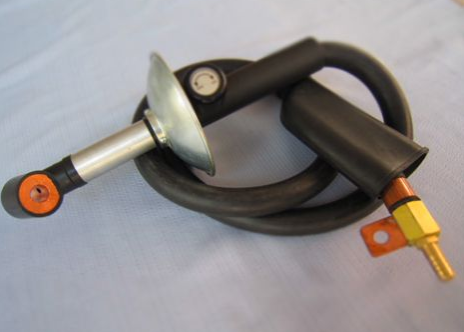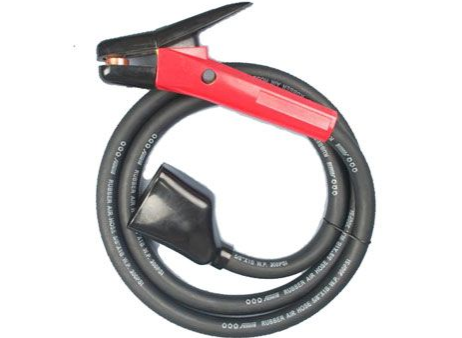When the end goal is to get to clean metal on a workpiece, carbon arc gouging is a frequently used process across many welding applications in the shop and in the field. Carbon arc gouging, commonly referred to as air arc gouging, is often chosen for material removal because it’s a portable process that can quickly remove a lot of material. Sometimes gouging is necessary to complete a specific type of weld for the weld joint design.
Following some gouging best practices can help improve the efficiency of the process and the results you see. Get answers to frequently asked questions about gouging.

Gouging Torch
Q1: When is gouging used?
A: Gouging is necessary for many tasks related to welding when the operator is trying to remove material to get to clean metal. The most obvious use of gouging is to remove large amounts of metal or welds that need to be repaired. In these cases, gouging is much faster than removing this material with a grinding wheel, which is typically used to remove surface defects or excess reinforcement.
The process is often a required step in the weld procedure for many full-penetration welds, which are frequently used for joints that will be subjected to high stress, such as those in structural construction. A procedure may require a gouge process to remove steel backing, burn off weld tabs, or back gouge.
Casting work may also frequently require this process. If a casting has a defect or flaw, operators can gouge out the defect then fill it back up with weld metal.

Q2: Can I gouge in CV mode?
A: You can gouge in constant voltage (CV) mode, but it will result in a shallower penetration profile that is wider and flatter than gouging in constant current (CC) mode. Although a CV process can provide satisfactory performance, most industries prefer the arc characteristics of a CC process, which provides arc consistency and a deeper, cleaner trough. For this reason, many Miller® industrial power sources have a dedicated CC gouge process, which optimizes the arc for gouge applications.
Q3: How do I know what size of the electrode to use for gouging?
A: Gouging electrodes are available in a range of sizes, so understanding your machine’s capabilities is key to avoiding using too large of an electrode. The spec sheet or owner’s manual for some machines will specify the electrode diameter ranges that can be run and list the maximum electrode size that can be used for carbon arc gouging. Or, as best practice, get the amperage ratings from the carbon electrode manufacturer.

Gouging Torch K4000
The electrode size should be about 1/8 inch smaller than the desired groove width. The depth of the groove will be dictated by travel speed and travel angle. Keep in mind that the capabilities of your power source typically limit your maximum electrode diameter, but you can also perform multiple passes to create larger grooves.
Q4: What are the advantages of using electrodes of different geometries for gouging?
A: Typical cylindrical electrodes, also known as pointed electrodes, are best for all-purpose gouging. Flat electrodes are good for achieving a flush surface, as in removing weld reinforcement or creating rectangular grooves. Jointed electrodes allow the ends to connect — eliminating stub loss — and hollow electrodes allow for increased travel speed.
About Hebei Machinery
Hebei Machinery manufactory and export Welding Machinery, Welding Consumable and Welding Component for more than 20 years.
It is our great honor to satisfy your requirements for welding products. Any requirement from you will be maximized by us. Let us help you find the best carbon arc gouging for your project. When you contact us, please provide your detailed requirements. That will help us give you a valid quotation.








